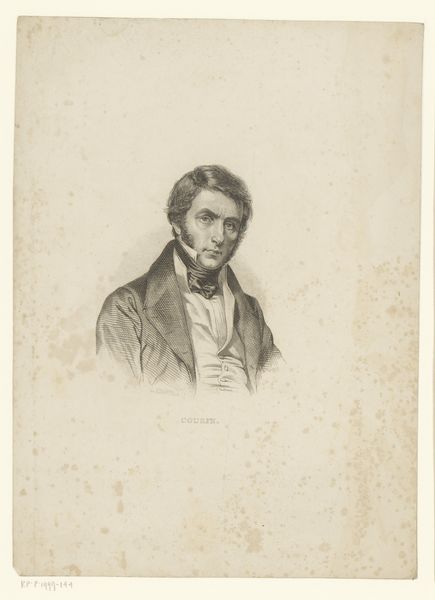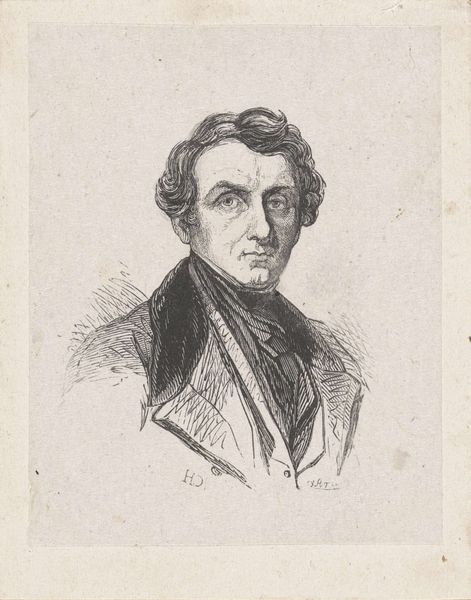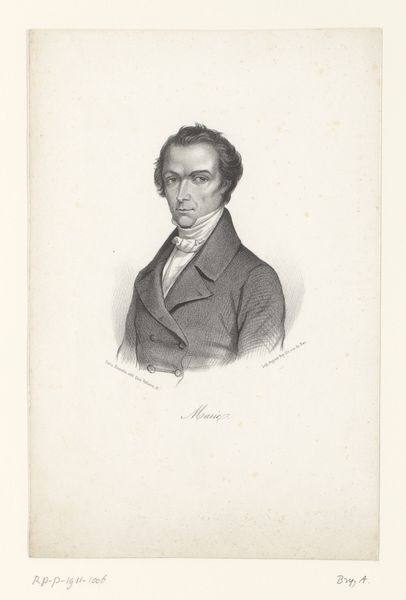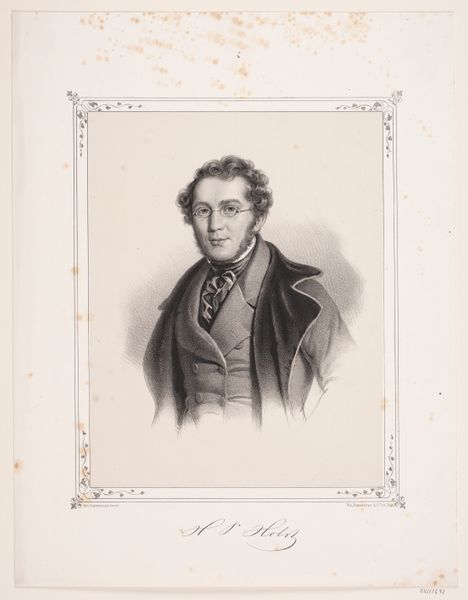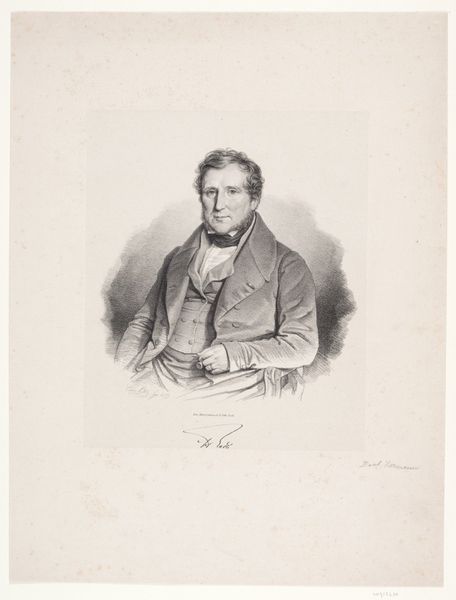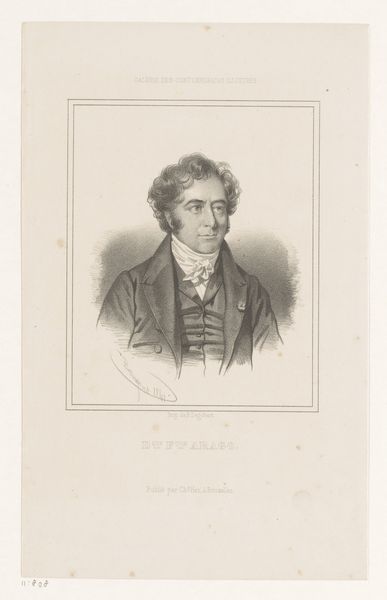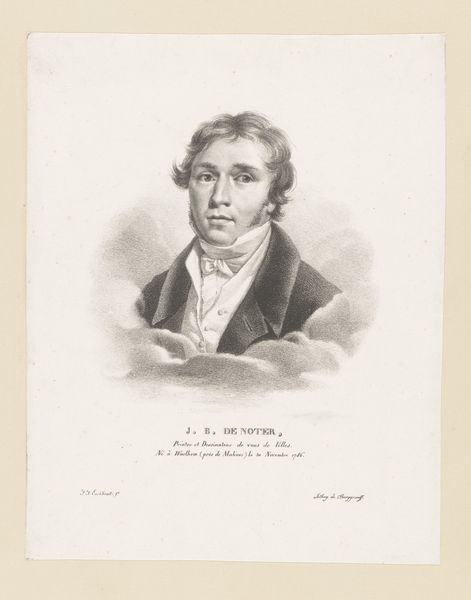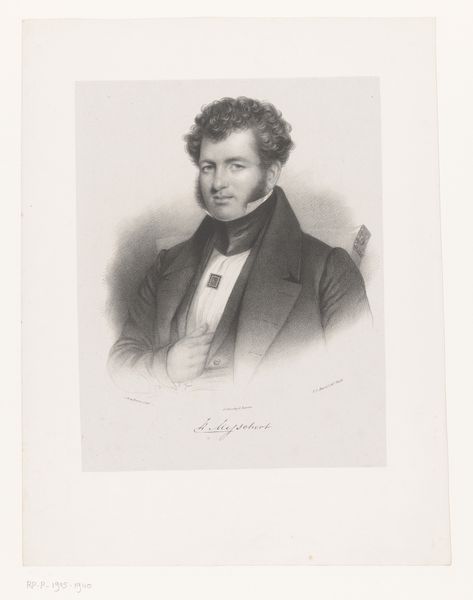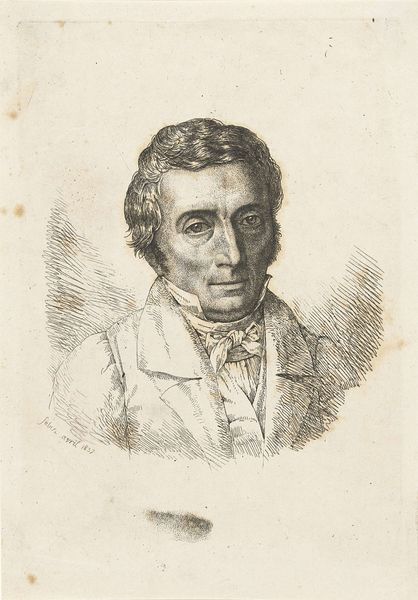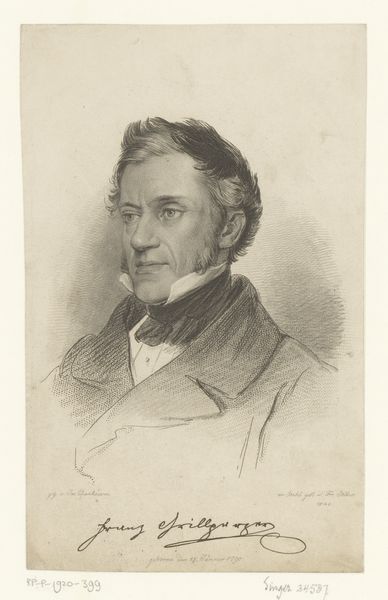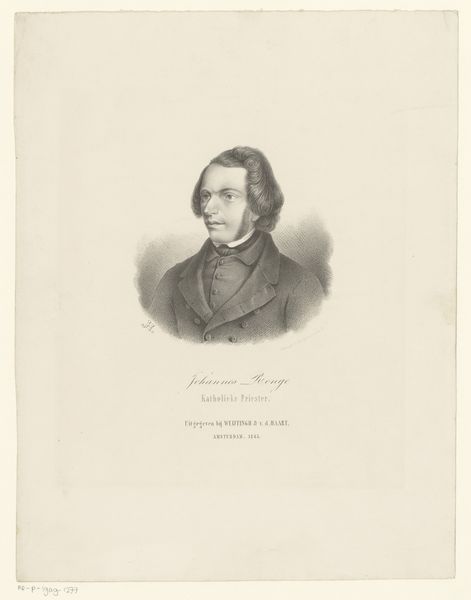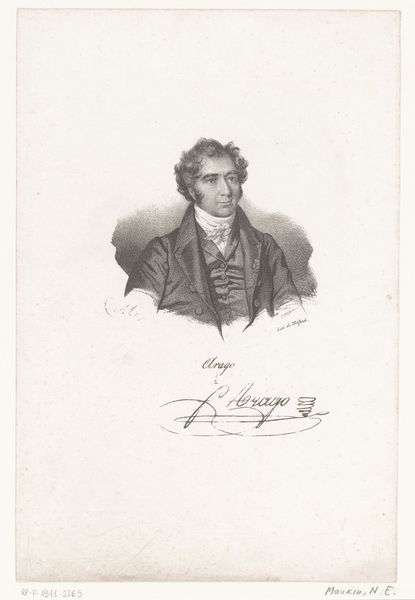
drawing, print, pencil, engraving
#
portrait
#
pencil drawn
#
drawing
# print
#
pencil drawing
#
pencil
#
portrait drawing
#
engraving
#
realism
Dimensions: 250 mm (None) x 198 mm (None) (bladmaal)
Editor: We're looking at a print titled "E. Rietschel," dating from 1829 to 1899. It’s a drawing or engraving of H.P. Hansen, crafted with pencil, at least in part. It strikes me as a fairly straightforward portrait; quite reserved, almost stoic. What’s your interpretation? Curator: It’s more than *just* a portrait, I'd argue. Consider the socio-political context of the 19th century, and the rise of the bourgeois class. Portraiture became a vital tool for establishing and projecting social status. This image, its availability as a print, speaks to a wider distribution of such markers of respectability. How might the act of reproducing and distributing this image impact our understanding of H.P. Hansen? Editor: That’s interesting! I hadn’t considered the reproduction aspect. Does that imply a certain level of fame, or perhaps aspiration to fame, that wasn't necessarily accessible to everyone? Curator: Exactly. Furthermore, examine his clothing, the careful detail rendered in the engraving. Each element subtly reinforces his position within society. Can we interpret it almost like a calling card in print? Whose gaze is the portrait designed to please? Editor: So, it’s not just *who* is depicted, but *why* and for *whom*? The print form democratizes the image somewhat, but it also reinforces existing social hierarchies, right? Curator: Precisely! It's a complex interplay. The availability and consumption of the image are just as important as the artistic skill involved. We’re not only viewing a representation of H.P. Hansen, but also participating in a historical moment where image culture was rapidly evolving and helping shape society. What’s your takeaway? Editor: I see it now: the power of portraiture extending far beyond mere likeness. This image tells a story of societal aspiration, identity, and the evolving role of art itself. Curator: Indeed. It reveals the intricate dance between art, social mobility, and the very public performance of the self.
Comments
No comments
Be the first to comment and join the conversation on the ultimate creative platform.
